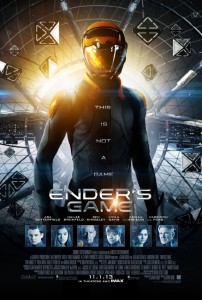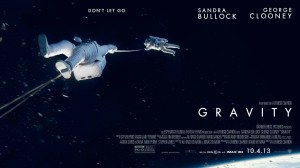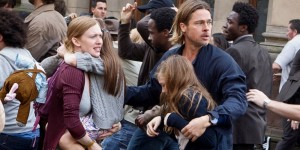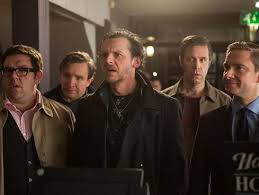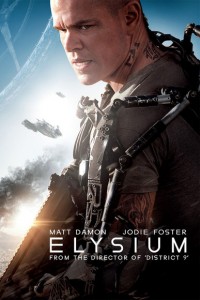Ender’s Game
Posted on November 1, 2013 at 6:35 pm
Director Gavin Hood (“Tsotsi”) has skillfully adapted the Nebula and Hugo award-winning novel about a boy who leads an interplanetary battle against insect-like aliens, doing justice both to the fun of the sci-fi action and to the seriousness of the book’s themes. The story has been adapted for film — Ender is several years older in the film than in the book and an extended and astonishingly prescient subplot about his siblings writing something resembling blogs and becoming highly influential political commentators has been dropped. But it is very true to the spirit of the book and its characters and with special effects technology vastly beyond what was possible when the book was written, spectacularly realizes some of the book’s most thrillingly imaginative passages.
A memorable scene in Kevin Smith’s “Clerks” has its two slacker heroes arguing about one of the most rousing moments in the history of film, the destruction of the planet-destroying Death Star in the original “Star Wars.” Randall points out that while the Jedi and the audience are cheering the explosion, they are overlooking the fact that the Death Star, still under construction, was not staffed with military but with independent contractors, who are at least arguably innocent bystanders in the conflict and unarmed. In the middle of a raunchy comedy there is suddenly a more nuanced moral sensibility than is exhibited in the the usual big-budget sci-fi extravaganzas.
That is what makes the Ender’s Game series by Orson Scott Card so compelling. The original book has been a worldwide best-seller for more than 20 years. Like “Star Wars,” “The Matrix,” and other YA favorites, it is the story of a “chosen one” of extraordinary skill who takes on the oppressive and vastly powerful but corrupt enemy, and it is filled with exciting action. But it also engages directly, thoughtfully, and sometimes provocatively with profound questions that are even more apt today than they were in the 1980’s: Should we sacrifice the interests of one person to benefit the rest of the world? Should we stage a pre-emptive attack by an enemy that is not currently demonstrating aggressive behavior? What is more important, the ability to win a battle or the ability to feel compassion or empathy?
The setting is at a time in the future when earth has successfully defended itself against an attack by an insect-like race of aliens called Formics and disparagingly referred to by humans as Buggers. The effects of the war against the Formic were devastating, and the entire resources of the world have been turned to just one goal — seeing out the Formics and destroying them to make sure that they can never return to attack the humans. They have determined that only a child has the reflexes, flexibility, and singleness of purpose to lead that attack.
All children are fitted to monitoring devices so that the military can see how they behave and find the likeliest candidates for military training. Couples are strictly limited to no more than two children. The Wiggins family is permitted a rare third because their son and daughter, while not suitable for training, show extraordinary ability. The third is Ender Wiggins (“Hugo’s” Asa Butterfield in a considered performance of great dignity and focus), whose deliberate but savage attack on a school bully brings him to the attention of the commander in charge of training, Colonel Hyrum Graff (Harrison Ford, returning to space for the first time since the “Star Wars” trilogy). Ender is brought to a space station for a series of training exercises called “games.”
A disagreement between Graff and Major Gwen Anderson (Viola Davis, once again speaking on behalf of humanity) is one of the film’s clearest statements of the moral conflict it lays out. Anderson wants the training to do what is best for Ender. Graff wants it to do what is best for humanity, and if that means inflicting the kind of trauma and encouraging the kind of brutality that will make Ender a better commander, he is willing to make that trade-off. Of course it is out of the question to consult Ender or his parents. Card wisely makes it clear that there are two questions here. One is whether the ends ever justify the means. The other is who should decide what ends or means to consider.
The games are fascinatingly constructed and the battles in the weightless chamber with freeze-ray weapons are absorbing and immersive. It gets more exciting when a new teacher with a fabled history and an impressive Maori face tattoo (Ben Kingsley) takes over. The climactic battle is as dramatic as we hope, but it is a remarkable twist and a surprising coda that bring depth and meaning to the story.
NOTE: In real life, author Card has demonstrated hateful homophobic bigotry that has led some people to call for a boycott of the film. Here is my view: I believe that the principles of courage, integrity, compassion, empathy, and service to others that “Ender’s Game” promotes are essential values. While I regret that the author’s ugly and bigoted statements show that he himself is still struggling to learn the lessons of his book, I agree with the poet Don Marquis that “an idea is not responsible for the people who believe in it.” The best of his vision should be shared with young people in the hopes that the next generation will transcend some of the biases of the previous ones.
Parents should know that this film includes extended sci-fi violence and peril with characters injured and killed, themes of interplanetary genocide, brief mild language, theme of child soldiers and moral conflicts, and bullies.
Family discussion: What does it mean to win “the right way”? Was Graff or Anderson right about the best way to treat Ender?
If you like this try: The book and its sequels by Orson Scott Card and the “Star Wars” movies starring Harrison Ford.

